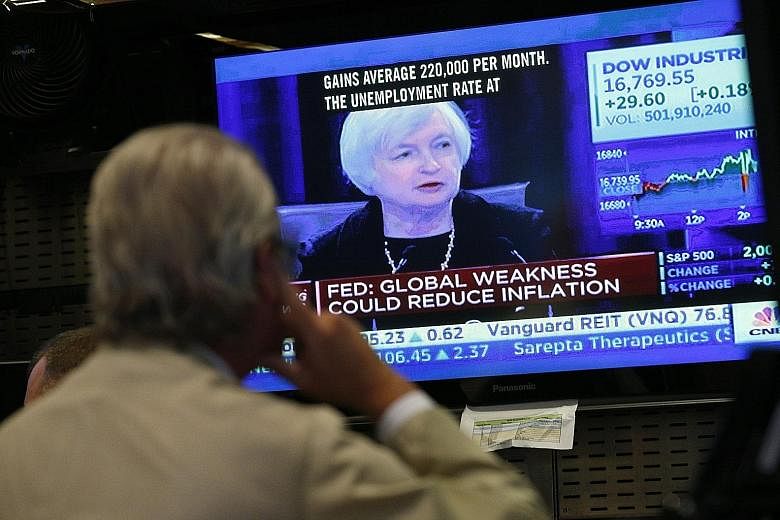WASHINGTON • Federal Reserve chair Janet Yellen blinked, which is not to say she made a mistake. Sometimes, blinking is a very sensible thing to do.
Dr Yellen and her colleagues at the Federal Reserve left interest rates unchanged at the same near-zero level where they have been lodged since December 2008.
For them, the risk of changing course prematurely just seemed higher than another couple of months of status quo, the New York Times said in an analysis yesterday.
After seven years of zero per cent interest rates, what's another two or three months among friends?
Fed officials think the economy is well on the path of healing and neither a modest interest rate increase nor a volatile stock market will wreck it. Inflation is also on track to rise steadily in the year ahead after hovering below the central bank's 2 per cent target the last few years.
What comes through in both the written materials the Fed released on Thursday and Dr Yellen's comments at a news conference is the sense that they want just a little more assurance, from both economic data and financial market prices, that their underlying assumptions are correct.
The Fed has said it is moving towards raising rates because it expects economic growth to continue, reducing unemployment and eventually raising inflation; on Thursday, Dr Yellen said that outlook had not changed.
She argued that the Fed was not simply responding to a few rough weeks in the stock market, but rather had its eyes on the United States economy.
"The recovery from the Great Recession has advanced sufficiently far and domestic spending has been sufficiently robust that an argument can be made for a rise in interest rates at this time," Dr Yellen said at a news conference. But, she said, "heightened uncertainties abroad", including the Chinese economy's weakness, had persuaded the bank to wait at least a few more weeks for fresh data that might "bolster its confidence" in continued growth.
The cost of such waiting appears to be low, the NYT report said.
The challenge she and the policy committee will face is that 2015 may end without the open questions that led to the September delay being resolved. It can take many months for financial swings to ripple their way through the economy.
There is no assurance these critical questions - of whether inflation is finally, truly, really poised to rise, and whether economic softness in China and other emerging markets will crimp United States growth - will be resolved by December or even by the spring of next year.
Fed interest rate decisions affect the economy with, as central bankers are fond of saying, "long and variable lags", meaning it takes many months for them to affect growth and prices.
How long is uncertain. As Mr Stanley Fischer, the Fed vice-chairman, said in a television interview last month that if the Fed waits until it is certain it is time to raise rates, it will probably be too late.
In other words, Fed officials inevitably have to make a decision based on what their models predict, not on cold, hard evidence.
The decision to hold off on rate increases this week suggests Dr Yellen and the Fed want a little more evidence that the economy is on the mend, but they may find themselves back in the same spot before they know it.
NEW YORK TIMES

